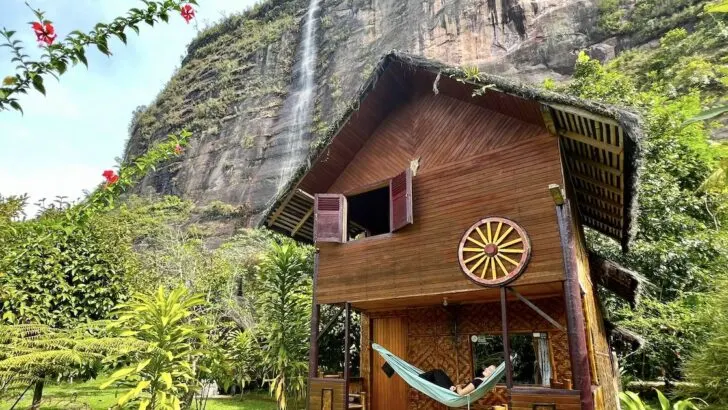So, you want to go off the beaten tourist track? Check out Harau Valley in west Sumatra, on Indonesia’s largest island.
Fondly nicknamed ‘the Yosemite of Indonesia’ by the global rock climbing community, the Harau Valley has 300-metre-high granite and sandstone cliffs, powerful waterfalls and rice terraces.
I hear you asking, “So, why does no one go there?” Simply put, Sumatra isn’t a well-travelled destination yet.
And when people do decide to visit Sumatra, they often only travel to the north, to trek with orangutans and visit the world’s largest crater lake.
Harau Valley wound up being one of my favourite destinations in Sumatra. I adored the hikes, traditional markets and the slow-paced life around the villages.
Therefore, I created this Harau Valley travel guide to cover everything you need to know, from how to get there and where to stay to the best things to do in the Harau Valley.
New to Sumatra? Check out my detailed Sumatra backpacking itinerary.
I have plenty of blog posts on Sumatra, including what to wear in Sumatra and the best things to do in Bukittinggi and Maninjau Lake.
Disclosure: This post includes affiliate links. If you decide to click through and make a qualifying purchase, I will receive a small commission at no extra cost to you – thanks for your support.
QUICK INFORMATION
Best time to visit: April to May
How to get there: Direct bus to Payakumbuh from Bukittinggi + opelet
Don’t miss these experiences in Sumatra…
1. The famous five-day Mentawai tribe tour 🏝️
2. Overnight orangutan trekking (from Bukit Lawang or Medan) – likely to sell out! 🦧
Where Is the Harau Valley?
Harau Valley is in the Minangkabau Highlands in west Sumatra.
It is only half an hour’s drive away from the city of Bukittinggi, a better-known tourist destination with World War II tunnels, traditional food markets and the scenic Sianok Canyon.
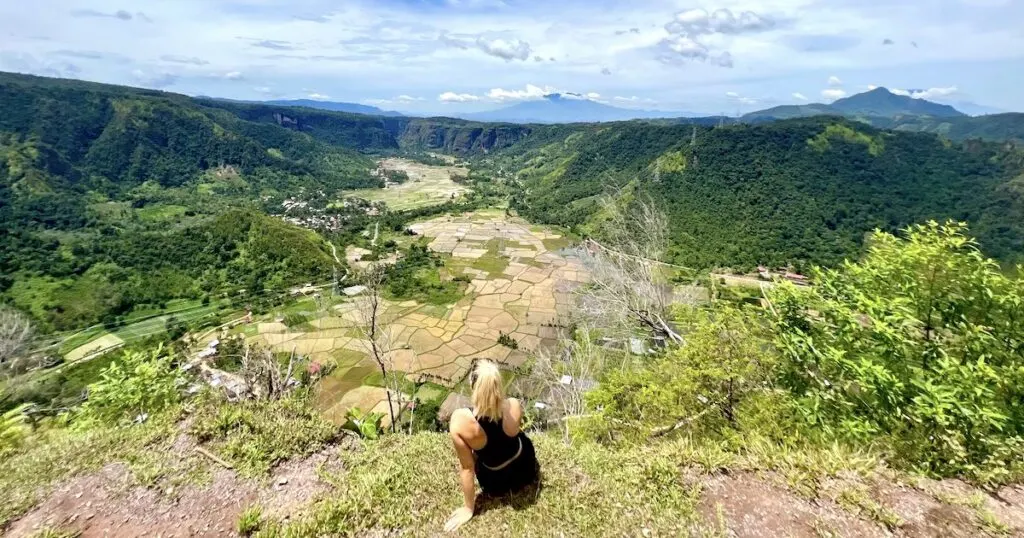
Payakumbuh is the nearest city to Harau Valley. Less-visited, it also has incredible traditional markets and street food.
Why Should You Visit the Harau Valley?
Visiting the Harau Valley is a bit like stepping into the unknown.
There’s hardly any information online. However, if you speak to any local person in Bukittinggi, the first place that they recommend you visit is Lembah Harau.
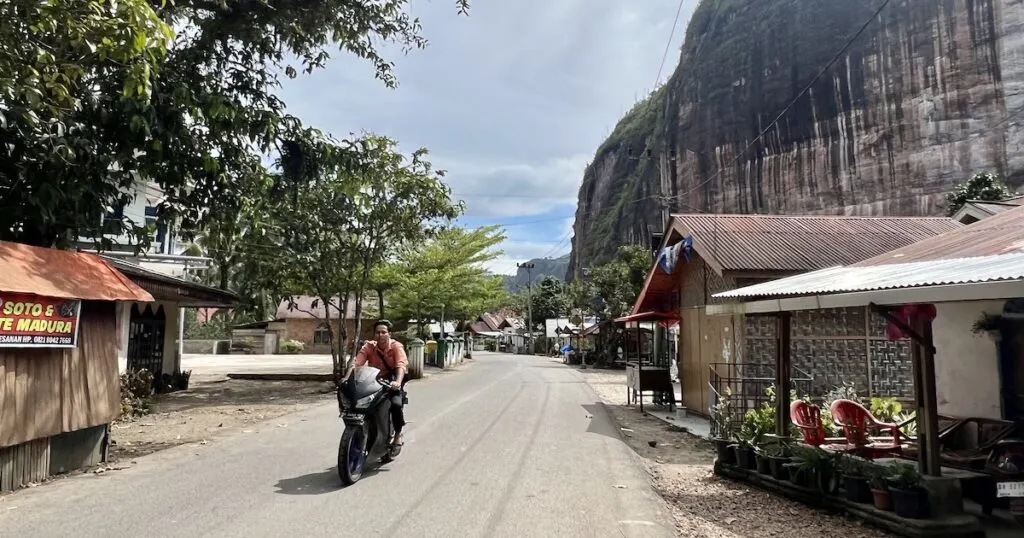
Harau Valley is a great destination for living ‘la dolce vita’ (the sweet life). It’s exceptionally peaceful, as the valley is made up of small villages, farms, forests and rice terraces.
Most of the ‘tourist’ activities centre around farm visits, hiking, and activities like cooking classes.
Immediately upon arriving, I extended my stay by three days simply because I felt so at peace.
Rock climbers really like Harau Valley too. According to the tourist board’s website, there are approximately 300 climbing routes through the Harau Valley.
To summarise, visit Harau Valley for:
- Hiking trails
- Incredible scenery and waterfalls
- Cooking classes and farm tours
- Relaxation
- Rock climbing
- Day trips to Sikabu, Mount Sago, and Payakumbuh
A Short History of the Valley
Harau Valley (also known as Harau Canyon or Lembah Harau) is thought to have once been part of the sea floor. German geologists found seabed rocks including breccia and conglomerates.
This also matches the traditional legends told within the valley.

The name of the valley has a fairly morbid backstory.
‘Orau’ means ‘hoarse’. This word was used to describe the area because villagers would often call out in distress during disastrous fast floods.
Over the years, ‘orau’ morphed into ‘Harau’, and it stuck.
Not much is known about the valley’s history aside from this, but the karst landscape hosts a number of old villages where most of the families earn their main living from farming.
It’s not uncommon to see farmers with old machinery and water buffalo in the rice fields.
Nearby Payakumbuh, the second largest city in west Sumatra, is where the Negeri Sembilan people in Malaysia originated.
Payakumbuh has been inhabited since ancient times, according to stones discovered in the town.
It’s also the origin of the Randai tradition, which merges martial arts, dance, and Minangkabau music.
How to Get to the Harau Valley
The best way to get to Harau Valley is by taking the bus from Bukittinggi.
Local buses depart from the Aur Kuning bus terminal and take just over one hour (closer to two or three hours if there’s traffic) to reach the village of Sarilamak, just past Payakumbuh.
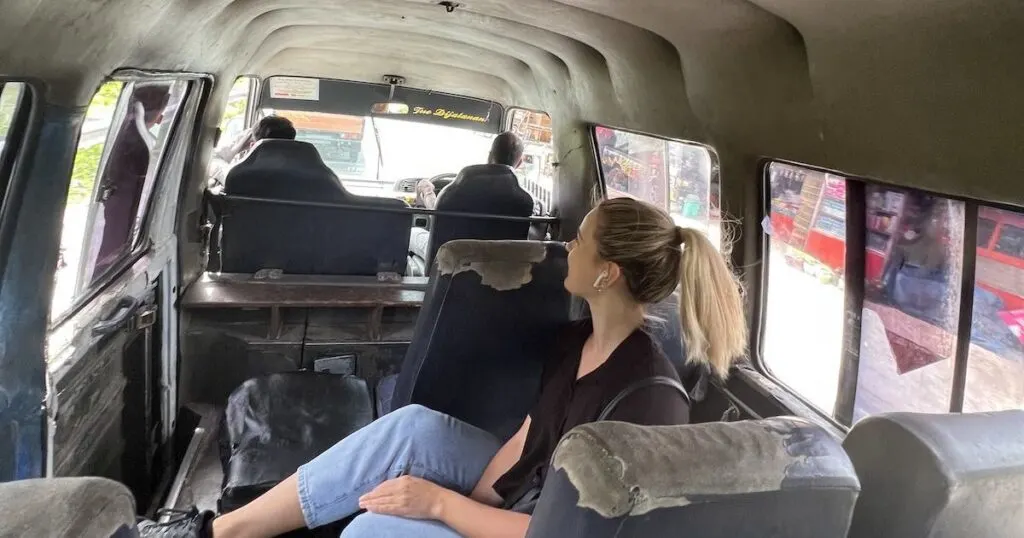
The local bus from Bukittinggi to Harau Valley (it was empty!)
When you arrive at the Aur Kuning bus terminal, ask for the bus to Harau Valley.
The staff will guide you to the correct bus and inform the driver to drop you off in the correct village for the Harau Valley.
The bus doesn’t go all the way into the valley, so after arriving at the village of Sarilamak, you will complete the remainder of your journey in an opelet.
The opelet is a traditional form of transport consisting of a scooter with a sidecar.
They will drop you directly at your accommodation.
The local bus to Bukittinggi should cost around 15,000 IDR.
The opelet journey should cost around 20,000 IDR, depending on where you stay in the valley.
You can also take a private taxi to the Harau Valley from Bukittinggi. However, this will be significantly more expensive.
How to Get Around the Harau Valley
The Harau Valley is large.
Therefore, you will need a motorised form of transport to reach hiking trails, waterfalls and other attractions. There isn’t any public transport.
1. Rent a scooter
Renting a scooter is the best way to get around. It gives you the freedom to go wherever you please.
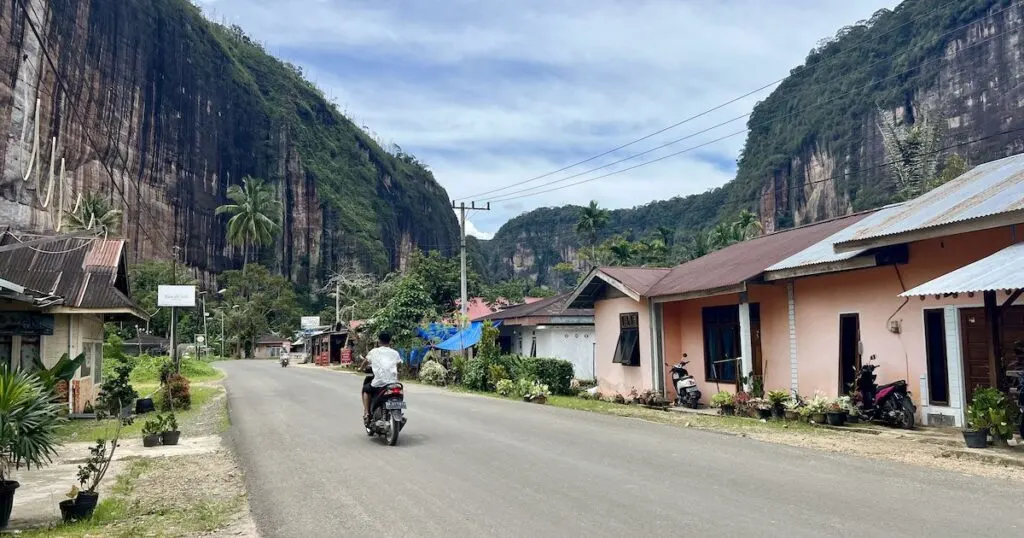
The valley’s main roads are in good condition. However, the smaller roads are riddled with gravel, dirt, and potholes. You can also expect steep gradients in some places.
Therefore, riding a scooter in the valley should only be attempted if you are an experienced and capable rider (and remember to have the correct licence).
Scooter rental is usually provided by your homestay. It typically costs around 50 – 100k IDR per day, depending on who you rent from.
2. Opelet
If you can’t rent a scooter, the opelet taxi is your second option.
It’s quite a basic form of transport, so it can’t go up or down steep gradients. It’s also very slow. Therefore, it’s not reliable for long or challenging journeys.
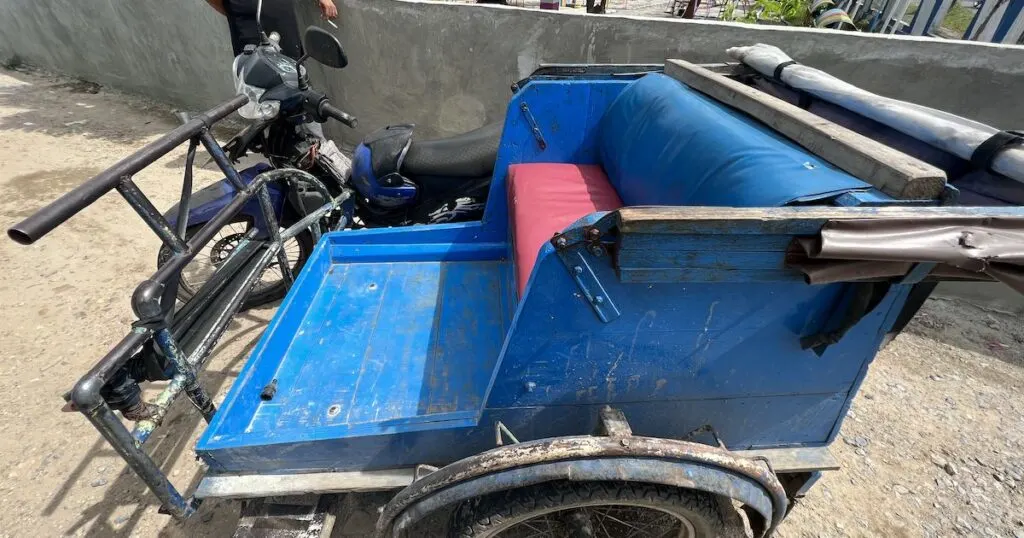
I used opelets to get to and from Payakumbuh.
3. Scooter tours
Scooter tours are the most expensive option, but if you’re not a confident driver, you’ll need to rely on this.
I booked a full-day scooter tour with my homestay, Abdi Homestay. This included an opelet to and from the Harau Valley hike for two people, followed by a scooter tour (again, for two people) to and from Sikabu.
In total, the cost was around 200k IDR per person for the full day of activities, including a four-hour round trip to Sikabu.
Where to Stay in the Harau Valley
Abdi Homestay
The best place to stay in Harau Valley is Abdi Homestay.
This collection of handmade wooden huts has miles of rice fields on one side and a cliff with a 50-metre waterfall on the other.
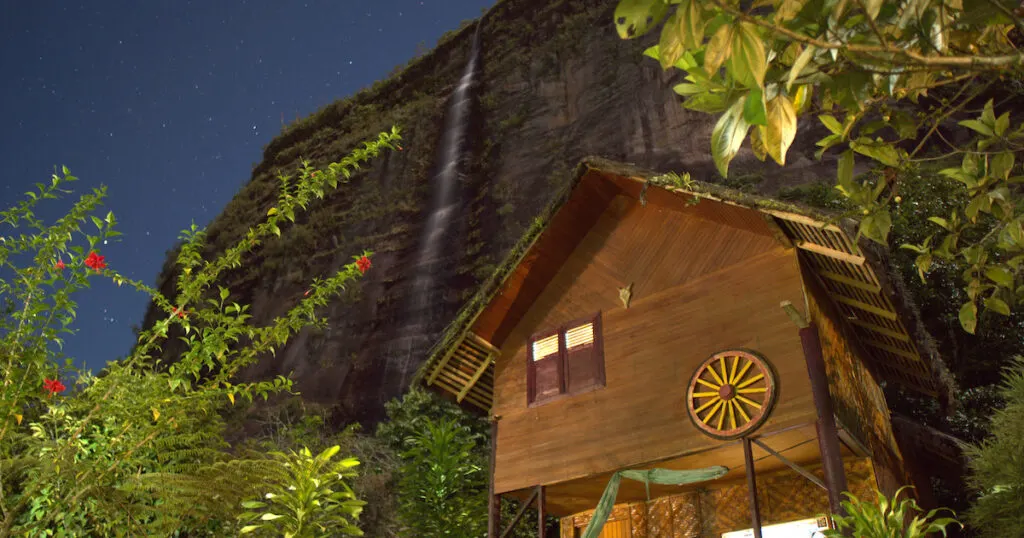
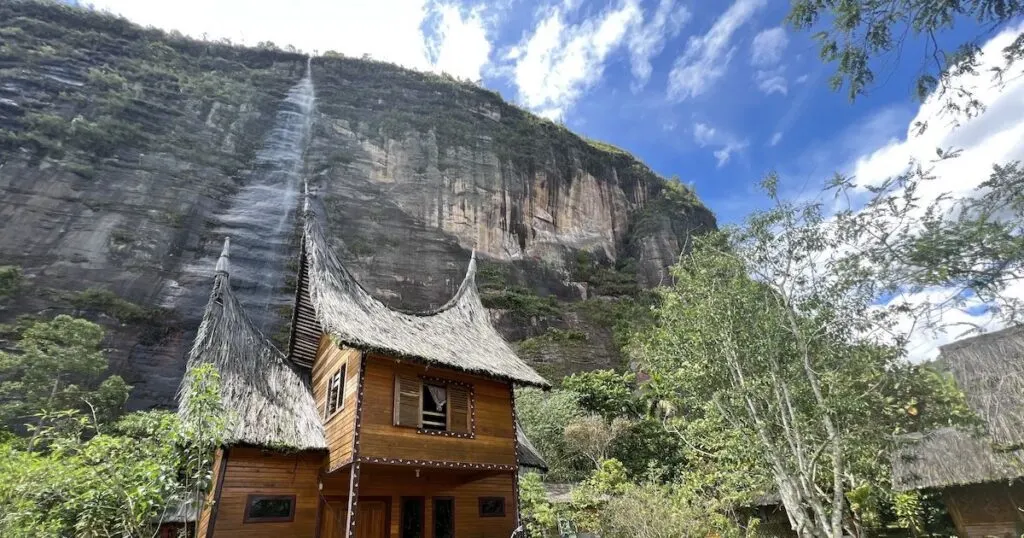
The friendly owners are a family who can organise treks, day trips, cooking classes (150k per class), as well as scooter rental and other activities in the valley.
On the first day, I extended my stay from two nights to four just because of how beautiful it is and how comfortable I felt.
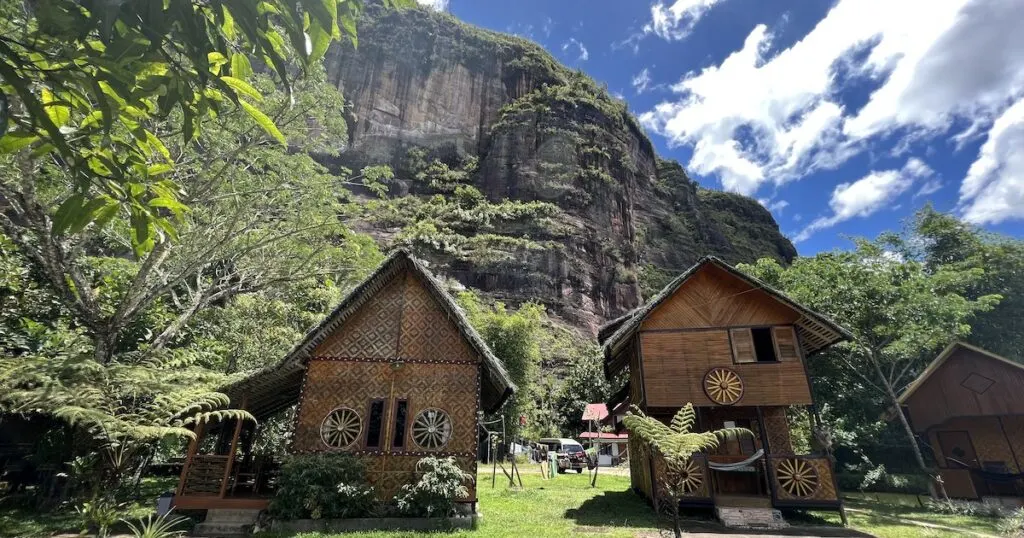
To book a hut at Abdi Homestay, you must contact them directly by Whatsapp. The number is listed on their Instagram account.
The larger huts with a balcony, hammock and two bedrooms cost 300k IDR per night.
The smaller huts with a balcony and one double bedroom cost 200k IDR per night.
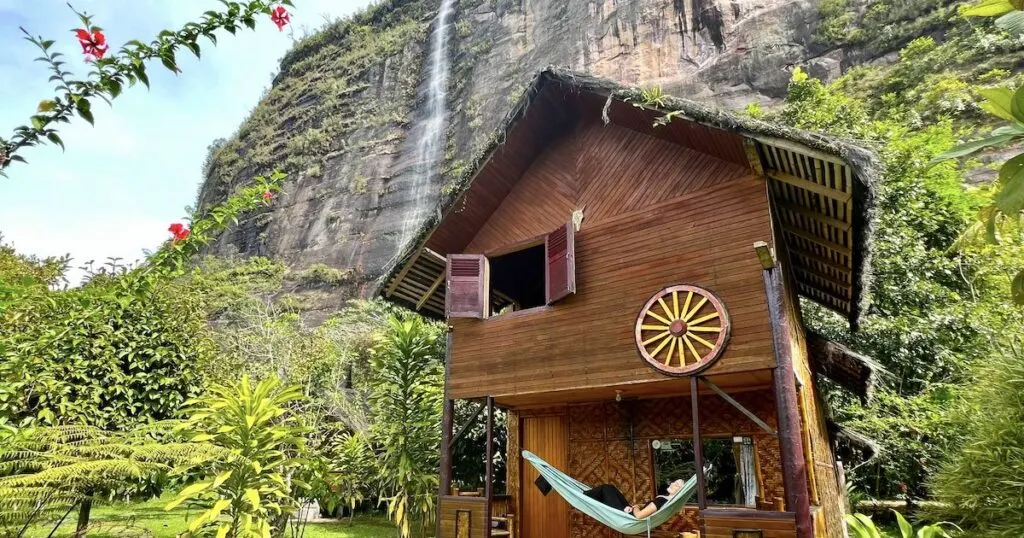
I stayed in one of the larger huts, and this was the view.
Budget Hotels in the Harau Valley
- The Edge Harau Glamping has luxury bell tents on the river’s edge. It has a nearly five-star rating on Google. You can book them through the WhatsApp link on their Instagram.
- Orau Inn Homestay also has a nearly five-star rating on Google and 9/10 on Booking.com. It is family-run and reviews say it’s friendly and has fab food.
There are plenty of budget homestays scattered throughout the valley. You can visit them in person to book a stay when you arrive.
There are also places to stay in Payakumbuh, although the city is half an hour’s drive from the valley itself.
Luxury Hotels and Resorts
There are no luxury hotels or resorts in Harau Valley or Payakumbuh.
The nearest luxury hotels are in Bukittinggi, which is an hour’s drive from the valley. From the city, you can arrange a day trip to the valley by scooter or car.
These are the best luxury picks in Bukittinggi:
- Novotel Bukittinggi has Minangkabau architecture and facilities including a swimming pool, restaurant, gym and spa.
- Grand Rocky Hotel is a stylish pick with jungle views.
- The Balcone Hotel & Resort is famous for its volcano views and great Japanese and Korean restaurants.
Tours In and Around the Harau Valley
The best way to arrange tours in the Harau Valley is through your accommodation.

This is another reason why I’ve ranked Abdi Homestay as the best place to stay, because the friendly owners provide a varied scheme of tours, including hikes, waterfall visits, and day trips around the local area.
For an activity you can book online, this four-day west Sumatra cultural tour visits Harau Valley and arranges visits to waterfalls, bamboo rafting, and guided trekking on days two and three.
What to Wear in the Harau Valley
Islam is the predominant faith in the Harau Valley.
Therefore, you should dress respectfully by covering your knees, shoulders and chest, just as per my advice on what to wear in Sumatra.
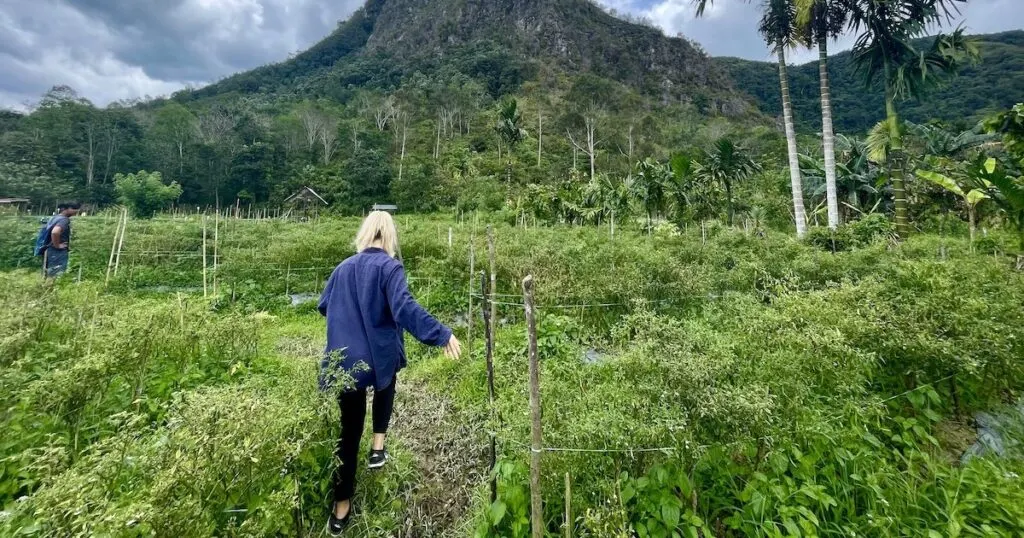
When you’re trekking in the Harau Valley, long sleeves and long trousers and socks are especially important because the forests have large mosquitoes.
Leeches may also be present.
At Abdi Homestay, I felt slightly more comfortable wearing slightly shorter dresses because the owners are more accustomed to the Western style of dress.
Just note that they do get visitors, who may not be used to this style of dress.
Things to Do in the Harau Valley
1. Hike to the Harau Valley viewpoint
If there’s only one thing you do in the Harau Valley, make it climbing to the Harau Valley viewpoint.
Let me be absolutely clear: this hike is not for the faint-hearted, but the reward is well worth the climb.
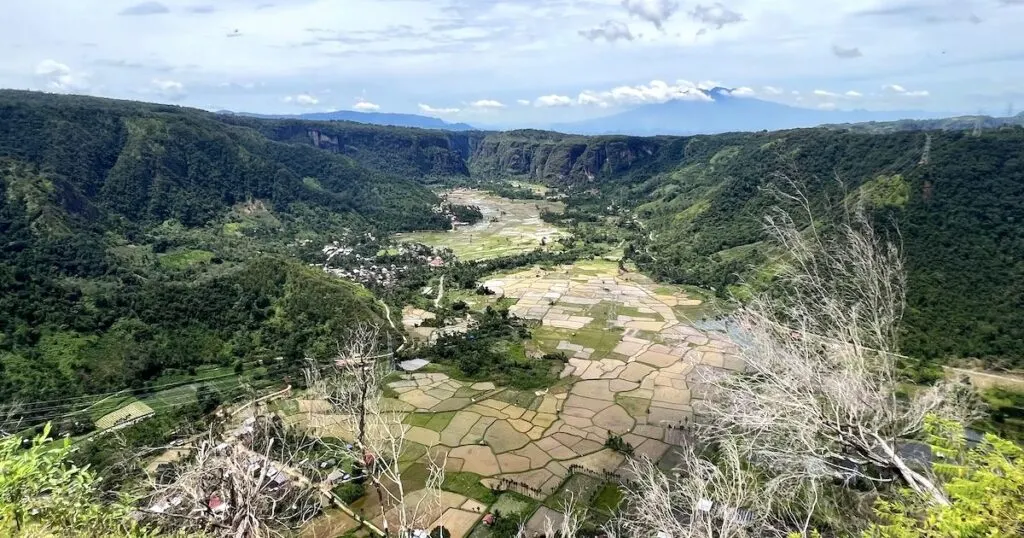
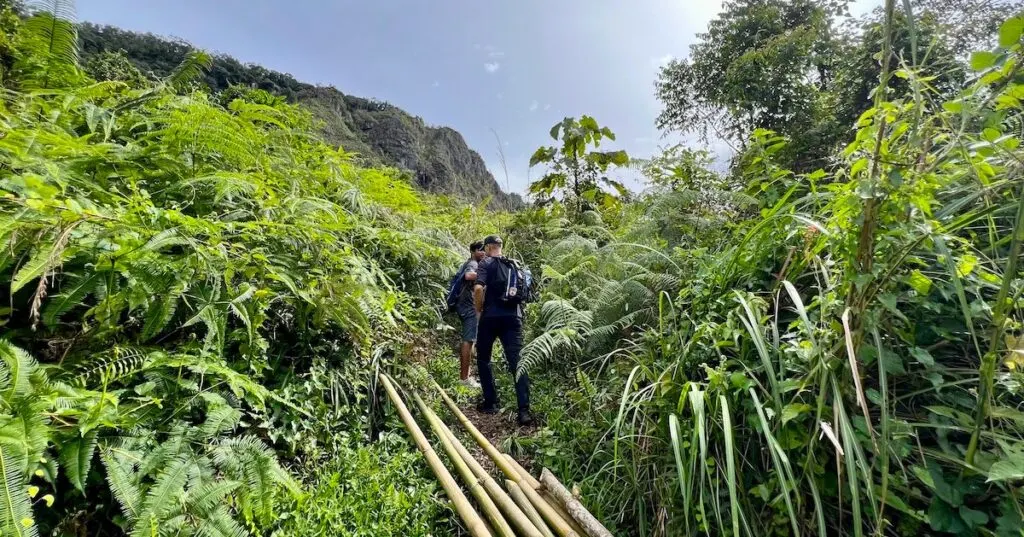
The entrance to the trek
The hike involves a steep uphill trek for around an hour, beginning and ending with crossing through thick ferns.
The middle section (the majority of the trek) is up a very steep zig-zag ‘trail’ consisting of dirt, mud, small rocks, and leaves.
I wasn’t surprised when my guide from Abdi Homestay said that 50% of hikers give up on the ascent.
But, look, when you finally emerge from the tree cover 40 – 60 minutes later, the view is incredible.

The first viewpoint
The hill overlooks a basin of rice terraces (much like a patchwork), surrounded on all sides by granite cliffs as tall as 300 metres.
Above the cliffs, the volcano (Mount Sago, I believe) completes the scene.
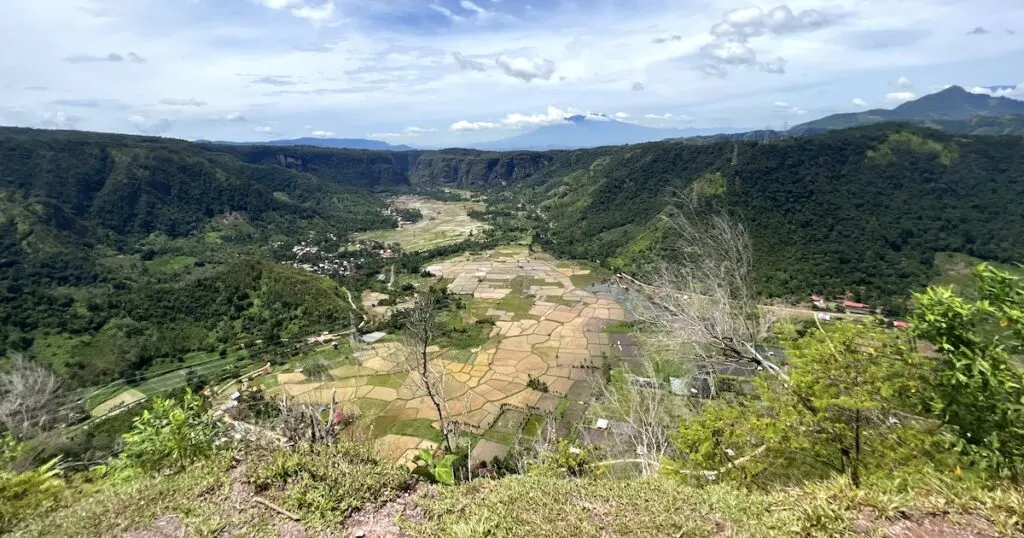
The second viewpoint
At this point, you can carry on upwards to reach a ‘cave’, which is more of a rock ledge than an actual cave.
Some guides will arrange for you to camp overnight at the cave if you want (as long as they know in advance). A sunrise view over the valley would be the reward.
A guide is essential for the hike because the trail is impossible to follow without prior knowledge of the route.
Most tour guides in Harau will know the hike, but if not, show them the above photos and they should recognise the view.
2. Take a relaxing stroll through the valley
For a more relaxing stroll, you can stick to the valley floor.
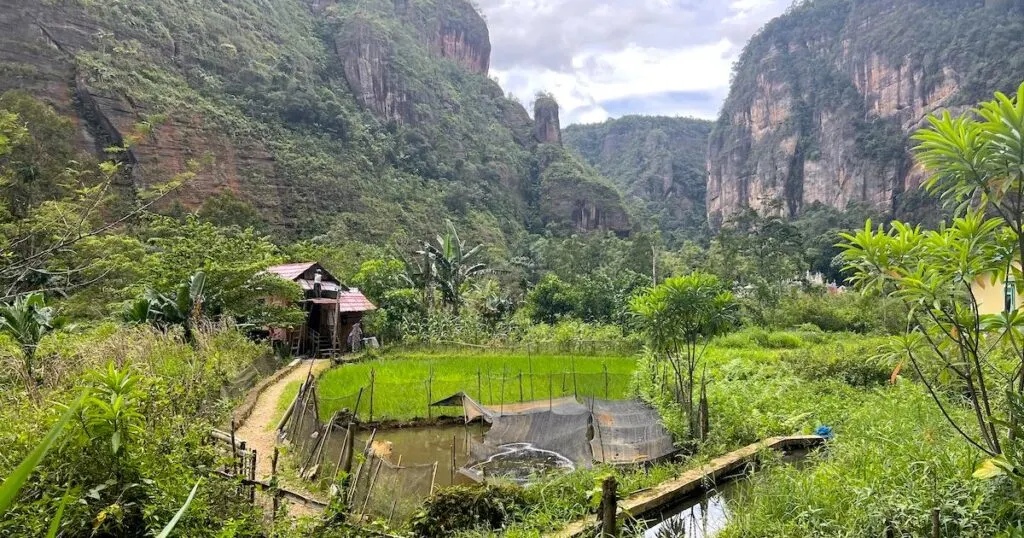
Along the main road, you will pass guesthouses, food stalls, a waterfall where locals bathe, small villages, paddy fields, crops, and sections of forest.
If you’re lucky, you could see macaques in the branches.
Look out for schools of ducks waddling around and bulls grazing in the paddocks.
3. Check out the valley’s waterfalls
Waterfalls are everywhere in the valley.
Some are easier to find than others, so your best bet is to do a good scan of the locations on Google Maps to check out the reviews and routes.
1. Harau Valley Waterfall
This is perhaps the best-known waterfall in the valley, mainly because it cascades metres down a sandstone cliff face alongside the main road through the valley. It’s hard to miss.
A pool has been built around the base of the waterfall. At most times of the day, you’ll come across a group of local people either bathing or playing in the water.
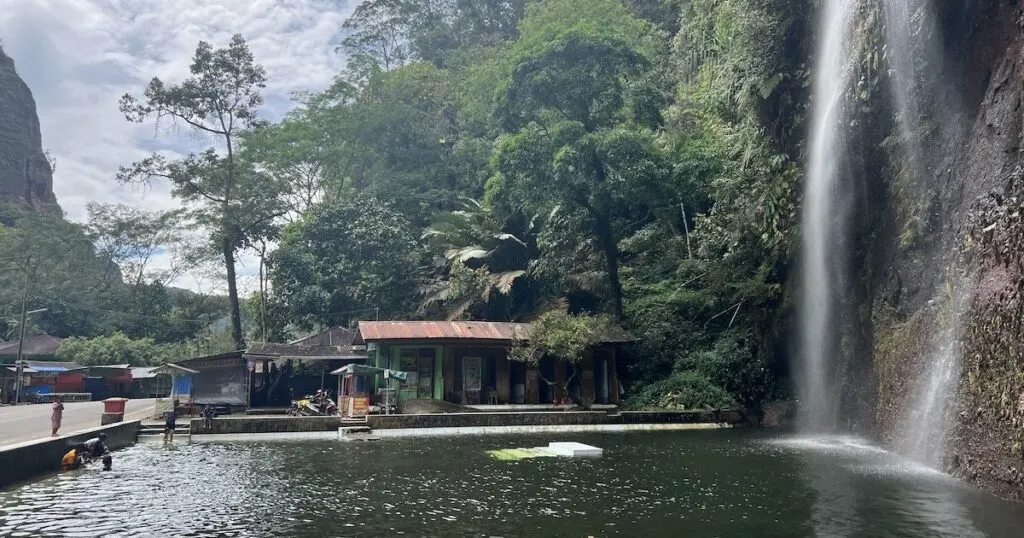
Opposite the waterfall, there are stalls selling snacks, drinks, and meals.
Feel free to bathe, but keep your clothes on, as this is a local spot and the predominant religion is Islam.
2. Sarasah Bunta Waterfall
Sarasah Bunta Waterfall is also within walking distance of the main part of the valley.
Fed by water from the highlands, it tumbles down the exposed rock into another locally-made pool.
3. Sarasah Donat
Sarasah Donat is located slightly outside of the main part of the valley, but it’s just a short scooter or opelet ride away. Out of the three waterfall locations, it’s one of the most unique.
While the main waterfall plunges a short distance into a natural pool, there are other waterfalls accessible by a wooden ladder.
One of the waterfalls tumbles through an opening in the roof of a cave.
4. Visit Pasar Sarilamak (Sarilamak Market)
If you want to experience a traditional market (of which there are only around 50 in the region), Pasar Sarilamak is the place.
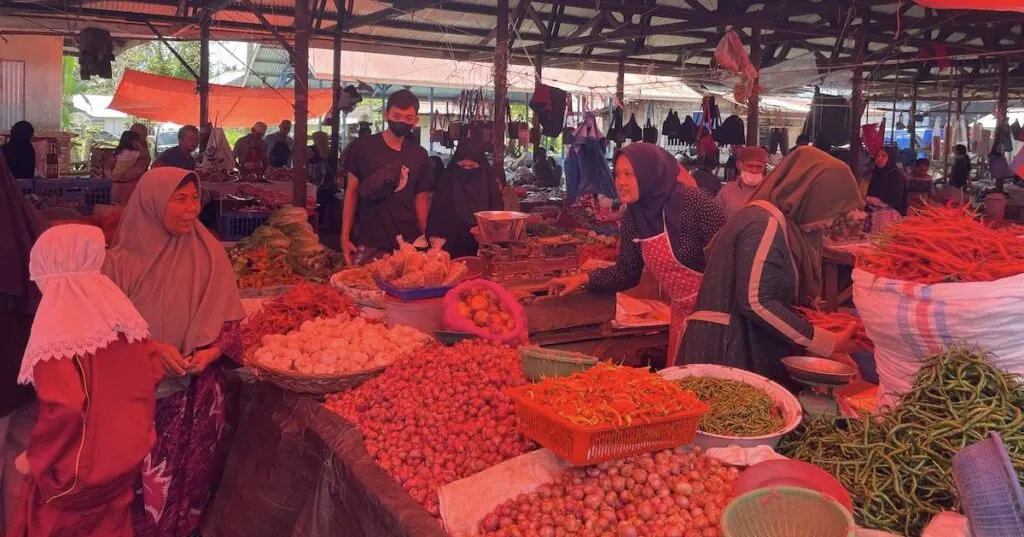
The market is based in the village of Sarilmak between Payakumbah and Harau Valley.
Market days are on Tuesdays and Saturdays.
It is packed with traditional, homemade Indonesian snacks and even items like tobacco and plates. There are tropical fruits, vegetables, fish, and other fresh goods.
8am is the best time to visit to soak up the atmosphere and get your hands on the freshest produce and snacks.
5. Explore Payakumbuh
Payakumbuh is a little further on from Sarilamak, and best visited by scooter or opelet.
The journey takes around 30 – 45 minutes from the Harau Valley.
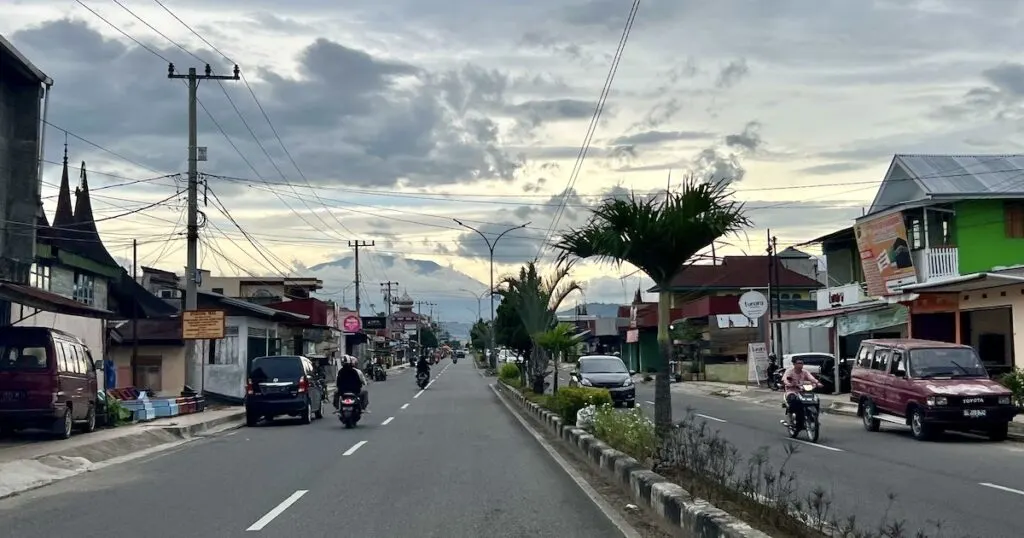
It’s the second-largest city in west Sumatra.
One of my favourite things about Payakumbuh was that you come across many traditional Minangkabau houses while wandering around the suburbs.
I dined on the main street during Ramadan and, just as everyone broke their fast, I got talking to a couple of friendly ladies who taught me some basic Indonesian.
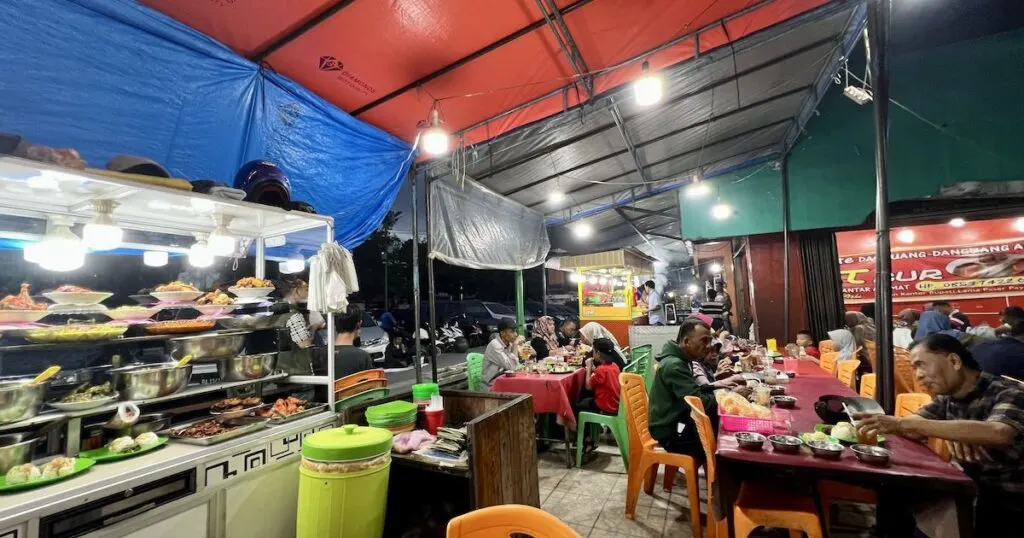
The town is teeming with market stalls selling fresh goods and snacks, as well as shops (including the first place in Sumatra where I found mosquito repellent for sale).
Ancient stones were discovered in Payakumbuh, so it’s likely that the town has been around for a long time.
It’s also where the Randai tradition (a combination of martial arts, dance and Minangkabau music) originated.
6. Take a cooking class
Harau Valley is the perfect place for a cooking class.
Abdi Homestay organises cooking classes for 150k IDR (get in touch when you stay or contact them directly through their Instagram).
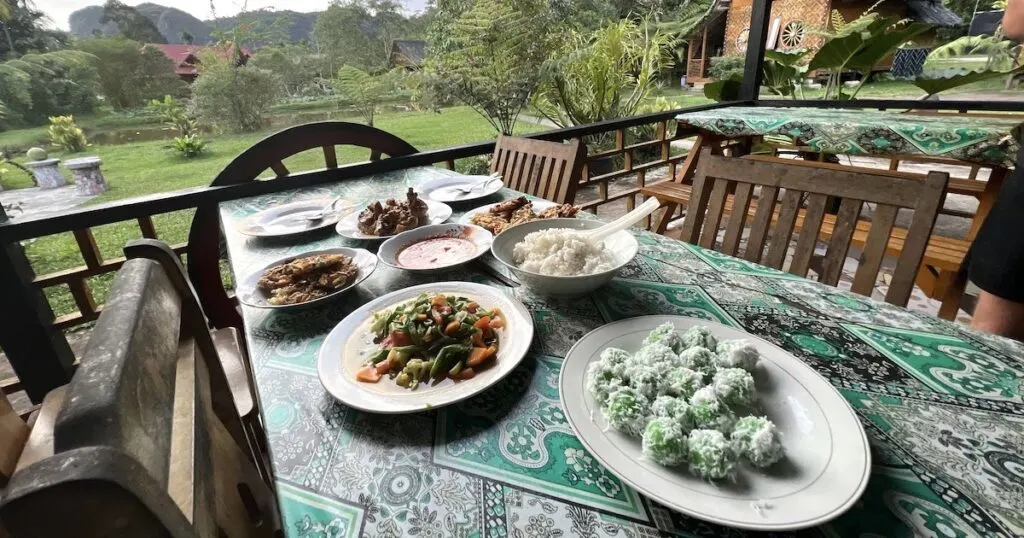
With their help, I cooked a spicy coconut chicken curry and several other Indonesian dishes.
I also made klepon, which are rice balls filled with palm sugar and flavoured with pandan and coconut.
The meal coincided with sunset, which is magnificent from Abdi Homestay.
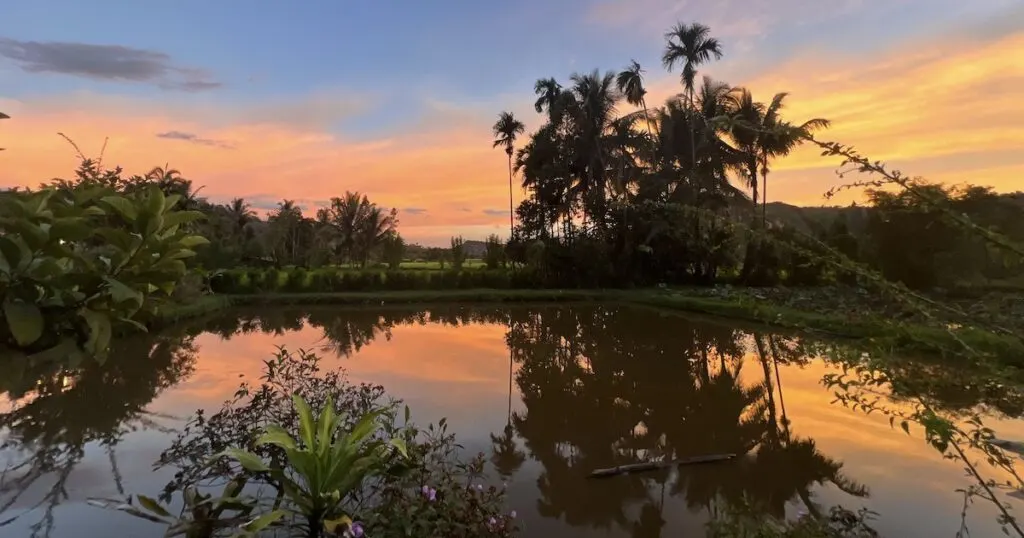
7. Take a day trip to the Sikabu rice terraces
Ah, the Sikabu rice terraces… This day trip was one of my favourite activities in the Harau Valley.
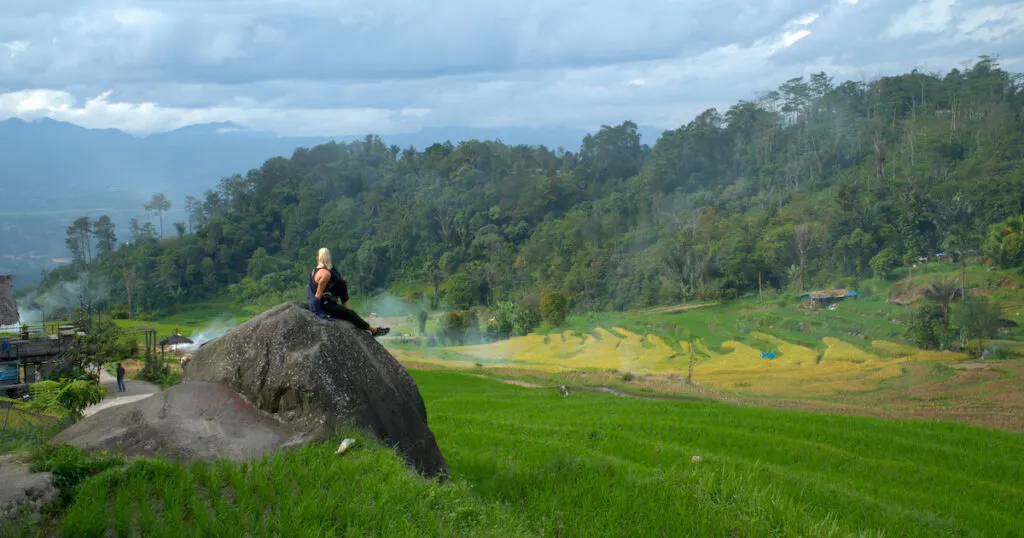
The underrated spot is only well-known among local tourists, but I can see it becoming more popular with international tourists soon.
Bordered by just a couple of small, fashionable coffee shops, the Sikabu rice terraces are populated by just a few water buffaloes, birds, and farmers.
Watching the farmers at work and the bulls’ ears flapping while you sip on a cup of tea is just fantastic.
I visited the Sikabu rice terraces during Ramadan, and my friend and I had the whole coffee shop at Bumi Sikabu to ourselves.
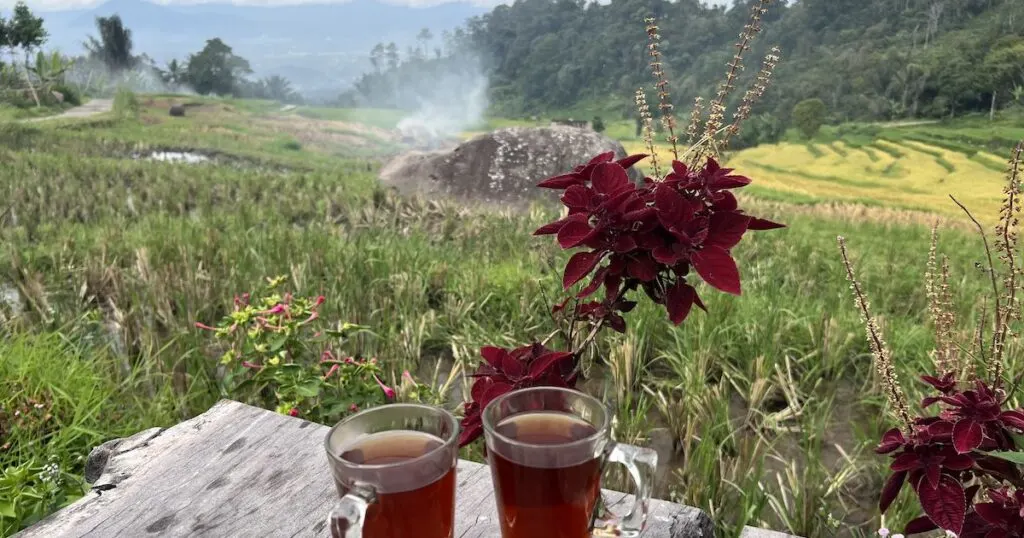
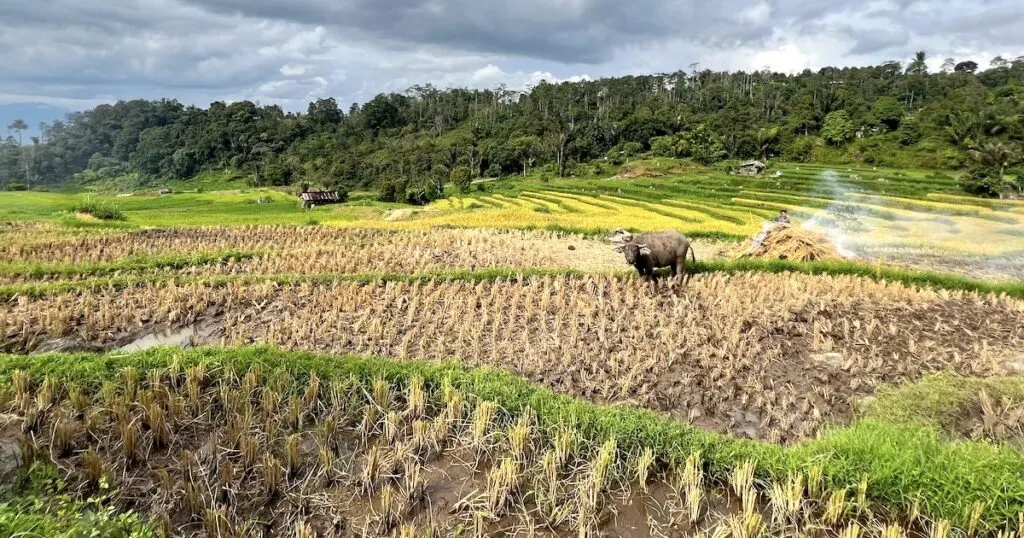
The only other people present were the shop staff and a little boy who had gotten his kite stuck in a nearby palm tree.
We helped him prise it free using a bamboo stick on the side of the road.
8. Visit Kelok 9
You thought that a road couldn’t be a tourist attraction? Kelok 9 will prove you wrong.
This highway, which consists of nine sharp turns, weaves through the east entrance to the valley.
I guess you could say that Kelok 9 was the first attraction I experienced in Sumatra.
Just as the sun was rising during the morning of my 15-hour overnight bus ride from Damai in east Sumatra to Padang in west Sumatra, I opened my eyes and found the bus twisting and turning between the tall, forest-clad cliffs.
I thought, ‘Sumatra is really something’.
There are touristy viewpoints over the main bends in the road where you can take photographs.
However, if you really want to see this attraction, I think that it is best experienced from a scooter.
9. Go for a scenic drive
Something as simple as a scenic drive is worth a whole afternoon of entertainment in the Harau Valley.
With a scooter, you’re free to go anywhere: drive through the valley to see the many farms and villages or through the countryside towards Mount Sago and the Sikabu rice terraces.
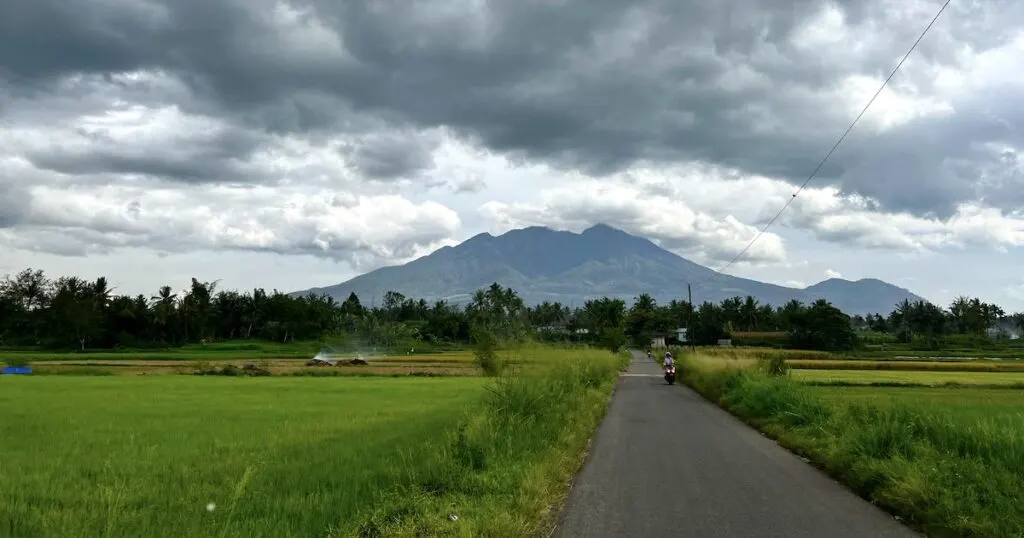
On my scooter tour, we took a round-about route to the Sikabu rice terraces, where I passed by some of the beautiful scenery I’ve seen in Sumatra.
There were oodles of rice terraces squeezed between forest and viewpoints over Payakumbuh and miles of paddy fields.
10. Go rock climbing
Rock climbing in the Harau Valley is for experienced outdoor climbers only, as there aren’t any climbing centres which provide rock climbing tours at the moment.
Most likely, you’ll have the views of the sandstone, rice terraces, and mountains all to yourself.
Helpful resources for rock climbers include:
Places to Visit After Harau Valley
1. Bukittinggi
Cradled between two volcanoes, Bukittinggi is one of the best places to soak up the culture in west Sumatra.
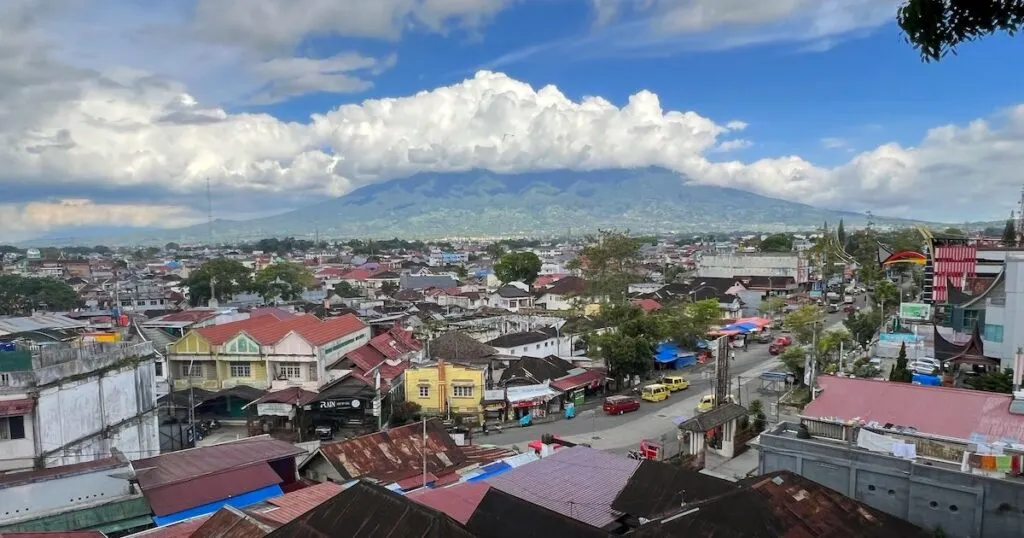
The traditional markets and street food will occupy your mornings and evenings, while hiking Sianok Canyon and visiting a network of underground tunnels dug out under the order of the Japanese during World War II will occupy your afternoons.
Check out my full guide to the best things to do in Bukittinggi.
2. Maninjau Lake
I bet you haven’t seen a lake like this before.
Formed by a long-ago volcano eruption, this small crater lake is surrounded by a bowl of rice terraces and fishing villages where life goes by at a lazy pace.
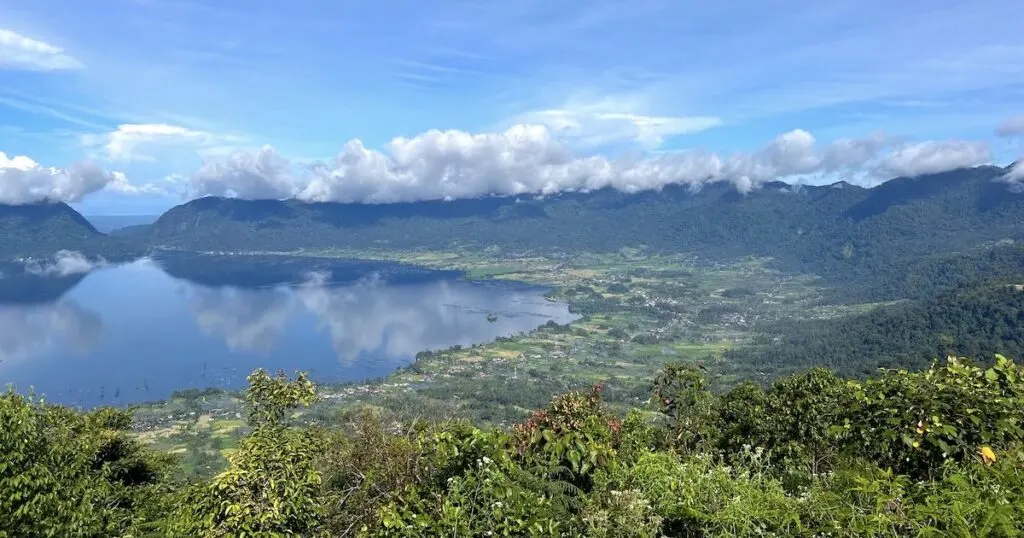
Take a pedal bike around the lake, explore the hikes in the area, and check out the viewpoint from Puncak Lawang on the hills above.
Check out my full guide to Maninjau Lake and the Puncak Lawang viewpoint.
3. Padang
Padang is a verified foodie city.
Many Sumatran and Malaysian dishes originate here, but it is most famous for the style of dining called nasi Padang (Padang rice), where diners must choose from up to 50 different local dishes.
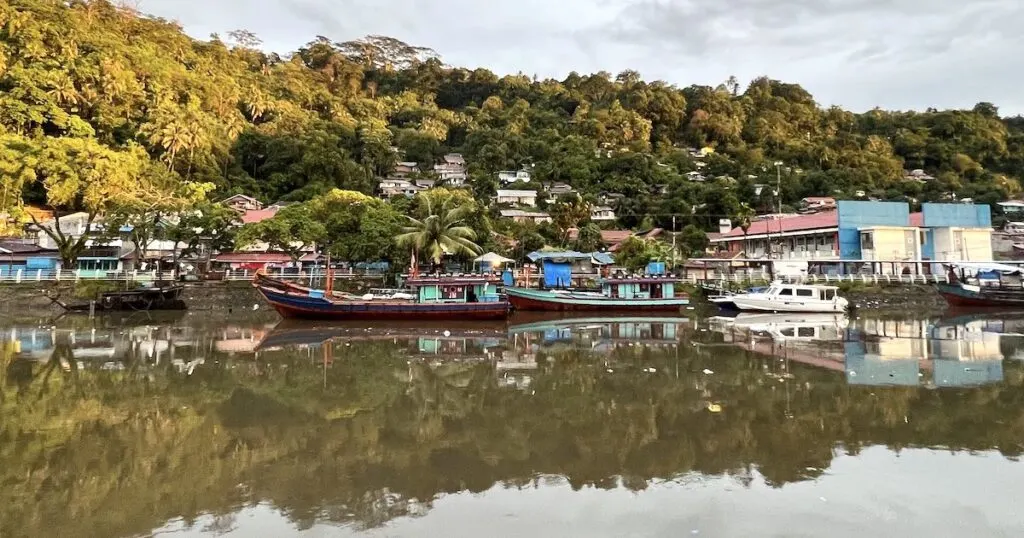
Padang is your springboard to the surf camps of the Mentawai Islands; a ferry runs between the destinations several times per week.
I hope you found this guide useful! Feel free to leave a comment or continue browsing my Sumatra content…
Recommended reading:
- West and North Sumatra Backpacking Itinerary – start here!
- Things to do in Bukittinggi + how to visit the Koto Gadang Great Wall
- What to wear in Sumatra + FREE packing list
- Things to do at Maninjau Lake, a 52,000-Year-Old Crater Lake in West Sumatra
- Visiting the Puncak Lawang Viewpoint above Maninjau
- North Sumatra:
- The 10 best resorts in Sumatra – treat yourself!

